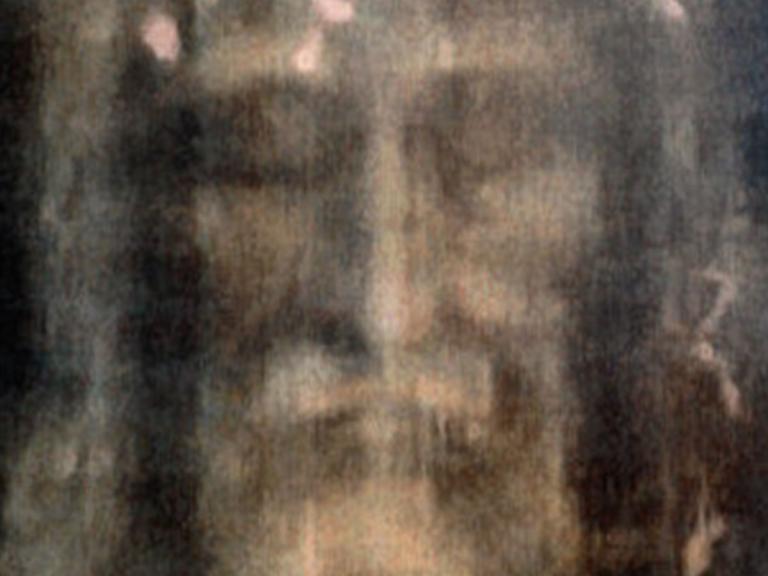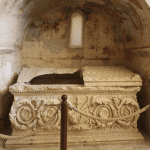
A new exhibit called “The Mystery Man” has opened at Salamanca Cathedral in Spain and its main attraction is a “hyperrealistic” model of the body of Christ after His crucifixion. The model, weighing 165.3lbs and measuring 5ft 10” is the culmination of the efforts of many experts, including experts in forensics and special effects under the guidance of Spanish art expert, Álvaro Blanco. “I chose people whose work I had seen and whose technique I trusted. Especially people who worked for the industry, rather than as artists, because as soon as you have an artist, they are going to leave their own style,” Blanco told Pillar Catholic. It took six years to study proper proportions and creating the mold and body took four to five months. The body is made of silicon and the hair is real human hair. The model spent eight years in Blanco’s garage before he met up with groups like ArtiSplendore and decided to set up the exhibit.
The measurements for the model were taken from the mysterious Shroud of Turin. Centuries old, the Shroud has baffled experts for years as to its authenticity and origin. It is claimed to be “the single most studied artifact in human history.” Said to be the death shroud that Jesus’s body was wrapped in, the first historical mention of the Shroud appeared in 1354 and it has been housed in the Cathedral of St. John the Baptist in Turin, Italy since 1578. Many faithful claim that the Shroud contains the bloodstained image of Jesus’s face after his crucifixion and highlights the many wounds, while others claim the Shroud to be a fake. The Catholic Church has no official position on the Shroud. For his part, Blanco spoke in the Shroud’s defense, saying, “The only way to make this shroud would be to do all of this to a man, to subject him to this horror, to scourge him, to crucify him, crown him with thorns, then pierce his side when he was dead and wrap him in a shroud.”
The shared images of the model show a body filled with lacerations, with the wounds being based on the injuries described in the Bible, including a gash in the side where a Roman soldier was said to have pierced Christ’s side, as described in John 19:31-37. Blanco stated that the model’s full effect is meant to be in person, saying “all art has to be seen from a perspective, but hyperrealism has to be experienced up close.” This is not the first model to be based off the Shroud. In 2018, Professor Guilio Fanti of the University of Padua created a 3D “carbon copy” of the Shroud of Turin. “This statue is the three-dimensional representation in actual size of the Man of the Shroud, created following the precise measurements taken from the cloth in which the body of Christ was wrapped after the crucifixion,” Fanti stated. He also stated he believed the Shroud showed that Christ suffered around 600 different blows on his body.
Both men show an interest in showing what God’s earthly form looked like on Earth, as well as the torture He faced in order to save humanity. The brutality of the crucifixion was most famously portrayed in Mel Gibson’s “Passion of the Christ,” with many believers in the Shroud saying the film’s brutality was, “accurately based on studies carried out on the cloth.” Blanco emphasized his model’s intention to highlight Christ as he was in the flesh, saying, “A Christian will see Christ, and a non-believer also sees Christ, because this is the pictorial original of Jesus of Nazareth.”


